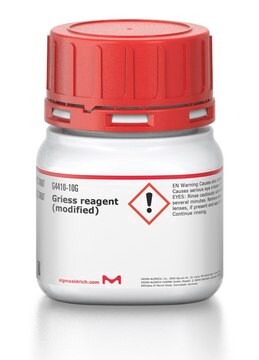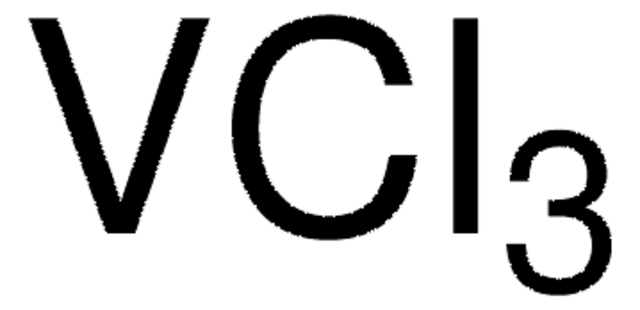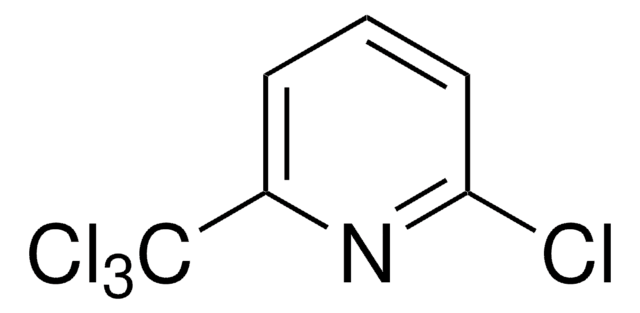N9125
N-(1-naftil)etilendiammina
≥98%
Sinonimo/i:
2-(1-naftilammino)etilammina
Autenticatiper visualizzare i prezzi riservati alla tua organizzazione & contrattuali
About This Item
Formula condensata:
C10H7NHCH2CH2NH2 · 2HCl
Numero CAS:
Peso molecolare:
259.17
Beilstein:
3707471
Numero CE:
Numero MDL:
Codice UNSPSC:
12352100
ID PubChem:
NACRES:
NA.22
Prodotti consigliati
Saggio
≥98%
Stato
powder
Punto di fusione
194-198 °C (dec.) (lit.)
Stringa SMILE
Cl.Cl.NCCNc1cccc2ccccc12
InChI
1S/C12H14N2.2ClH/c13-8-9-14-12-7-3-5-10-4-1-2-6-11(10)12;;/h1-7,14H,8-9,13H2;2*1H
MZNYWPRCVDMOJG-UHFFFAOYSA-N
Cerchi prodotti simili? Visita Guida al confronto tra prodotti
Categorie correlate
Descrizione generale
N-(1-Naphthyl)ethylenediamine dihydrochloride is an organic compound with a conjugated ring structure that serves as a strong electron donor in charge transfer complexes. Its free base, also known as Bratton-Marshall reagent, is widely used in diazotization coupling reactions for detecting nitrites and nitrates.
Applicazioni
N-(1-Naphthyl)ethylenediamine dihydrochloride can be used as a reactant to synthesize:
- N
- -(1-naphthyl)ethylenediamine-substituted cylotriphosphazene derivatives as potential antimicrobial agents.
- Fluorescent chemosensor compound with a naphthyl group as fluorophore and cyclen as metal ion chelator for the detection of Zn(II) in an aqueous solution.
- (N-1-Naphthyl-ethylenediamine)- dichloroplatinum(II) fluorescence complex (λmax = 405 nm).
Avvertenze
Warning
Indicazioni di pericolo
Consigli di prudenza
Classi di pericolo
Eye Irrit. 2 - Skin Irrit. 2
Codice della classe di stoccaggio
11 - Combustible Solids
Classe di pericolosità dell'acqua (WGK)
WGK 3
Punto d’infiammabilità (°F)
Not applicable
Punto d’infiammabilità (°C)
Not applicable
Dispositivi di protezione individuale
dust mask type N95 (US), Eyeshields, Gloves
Scegli una delle versioni più recenti:
Possiedi già questo prodotto?
I documenti relativi ai prodotti acquistati recentemente sono disponibili nell’Archivio dei documenti.
I clienti hanno visto anche
Improved dye procedure for determining urea concentration by using o-phthalaldehyde and naphthylethylenediamine.
N T Lequang et al.
Clinical chemistry, 33(1), 192-192 (1987-01-01)
P K Laikind et al.
Analytical biochemistry, 156(1), 81-90 (1986-07-01)
The Bratton-Marshall reaction can be used to identify patients with adenylosuccinate lyase deficiency. These patients excrete in their urine the dephosphorylated derivative of the de novo purine synthesis intermediate 5'-phosphoribosyl-4-(N-succinylcarboxamide)-5-aminoimidazole (SAICAR). The test described here depends on a coupling reaction
C E Davis et al.
Journal - Association of Official Analytical Chemists, 68(3), 485-488 (1985-05-01)
Current methods used for determining residual nitrite concentration in foods involve forming an azo dye that is measured spectrophotometrically. Conventional procedures do not specify control of pH for the final colored solution. Because many indicator dyes are pH-dependent, absorbance of
Shigenori Nakano et al.
Talanta, 81(3), 786-791 (2010-03-20)
A novel flow-injection spectrophotometry has been developed for the determination of molybdenum(VI) at nanograms per milliliter levels. The method is based on the catalytic effect of molybdenum(VI) on the bromate oxidative coupling of p-hydrazinobenzenesulfonic acid with N-(1-naphthyl)ethylenediamine to form an
R K Goldman et al.
Analytical biochemistry, 259(1), 98-103 (1998-05-30)
A high-pressure liquid chromatography (HPLC) assay for measuring picomole quantities of nitrosothiol in biological samples was developed. The assay utilizes the catalytic reduction of nitrosothiol by mercuric cation (Hg2+). Released nitrogen oxide reacts with sulfanilamide (SA) and N-(1-napthyl)ethylenediamine (NNED) to
Il team dei nostri ricercatori vanta grande esperienza in tutte le aree della ricerca quali Life Science, scienza dei materiali, sintesi chimica, cromatografia, discipline analitiche, ecc..
Contatta l'Assistenza Tecnica.












